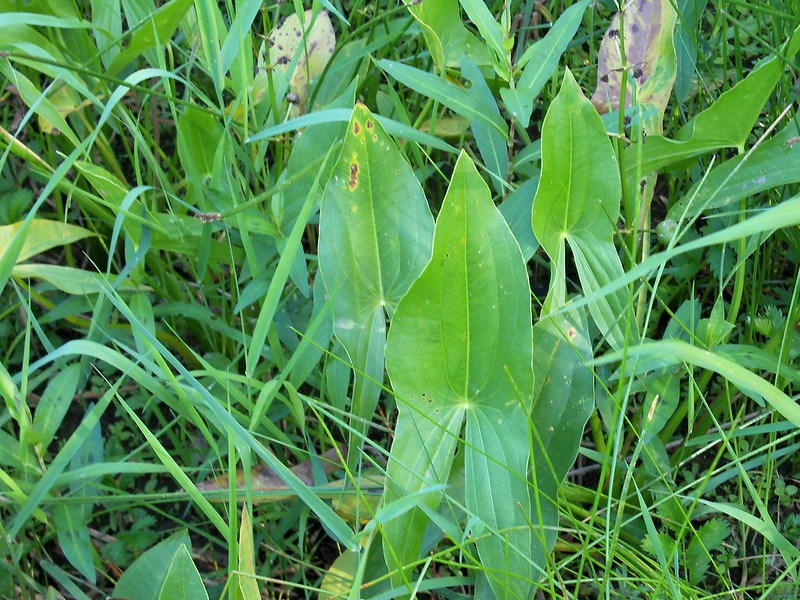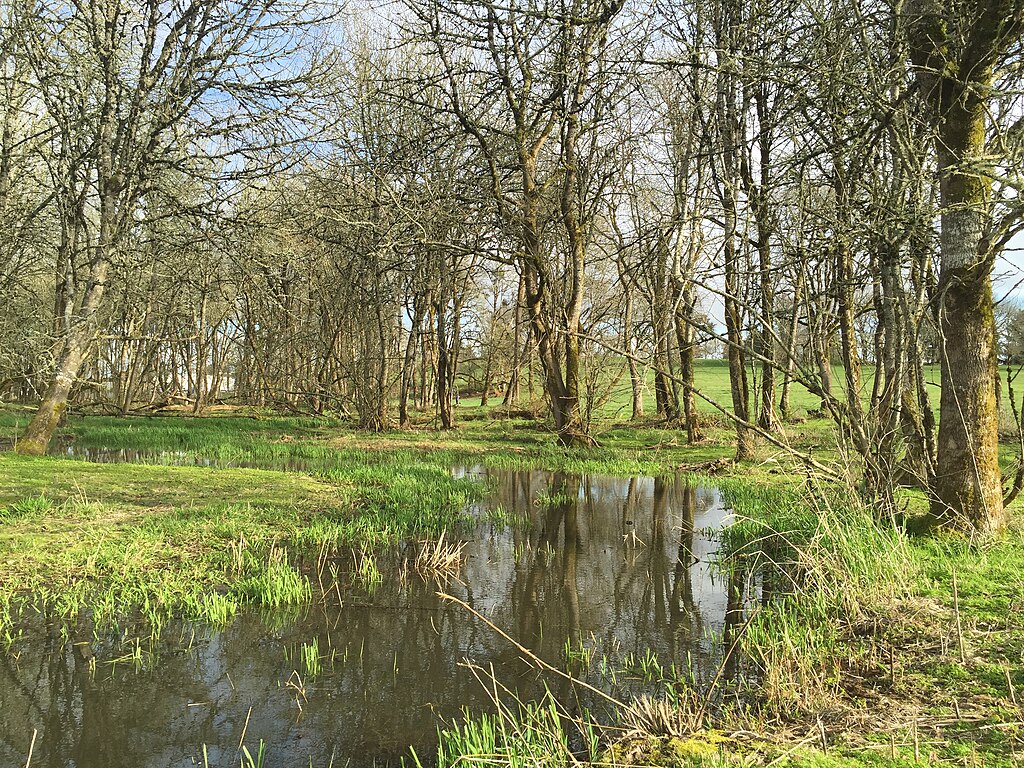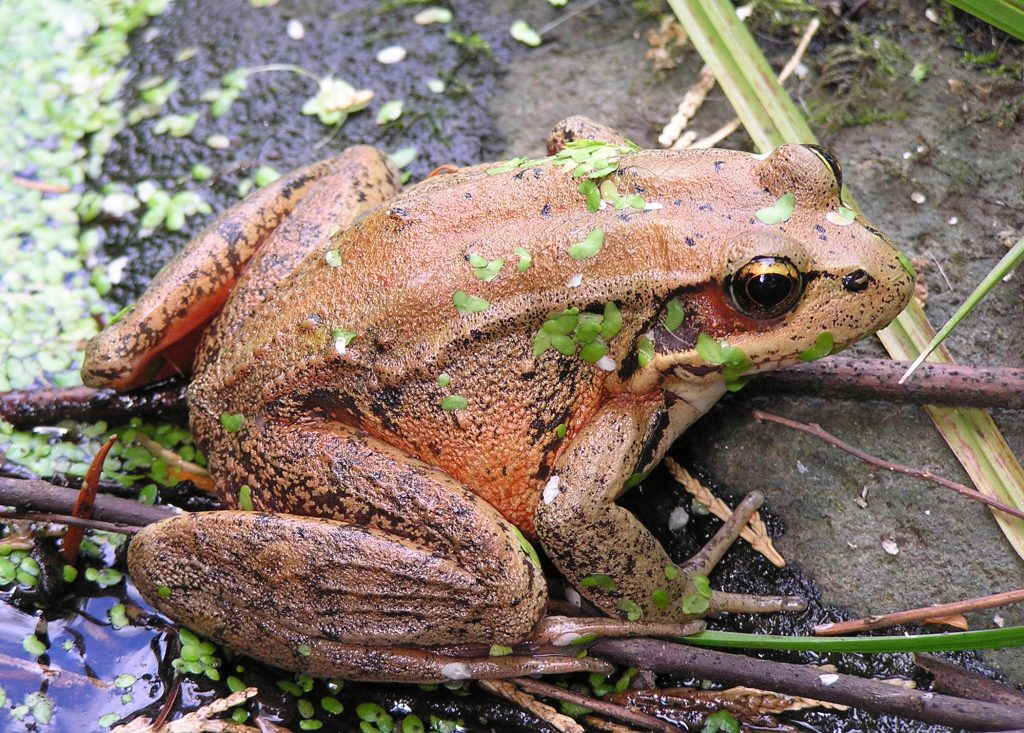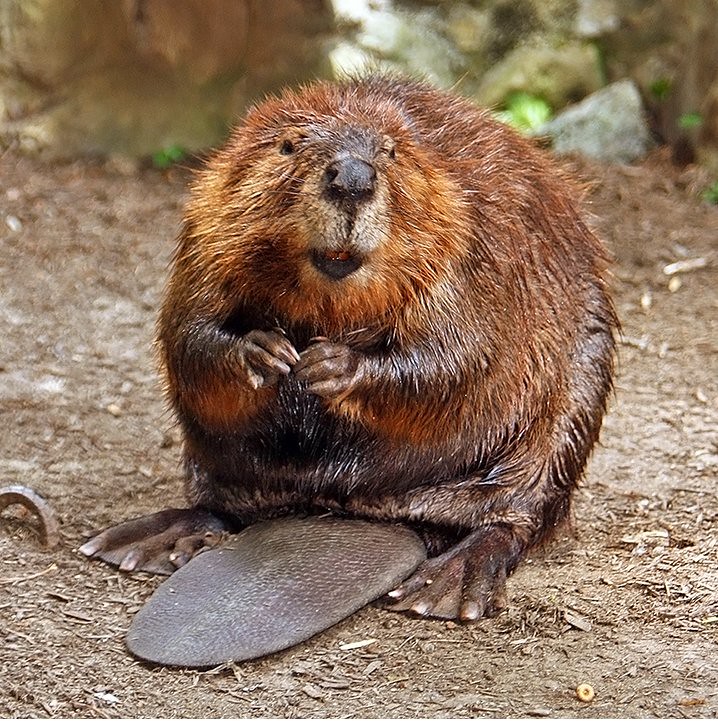Description
Wetlands are identifiable by the presence of water either permanent or seasonally, plants that are adapted to wet conditions, and hydric soils. Although there are many different types of wetlands, there are four main types found in Oregon. Wetlands are a high priority critically endangered habitat, because of the variety of wildlife they host, and the benefits they provide to the ecosystem.
Types
- Marsh: dominated by grasses and other herbaceous plants. Found near rivers, lakes, valley bottoms and estuaries. They may be seasonally or continuously flooded and include water adapted plants such as sedges, bulrushes, spikesedges, rushes, cattails, and floating vegetation. They tend to have mucky soils, which indicates high mineral content.
- Swamps: dominated by trees, found in low lying areas such as floodplains and valleys. They generally flood seasonally with nutrient rich waters. Some vegetation found in these habitats include willows, hardhack, alder, red osier dogwood, ash, and pacific crabapple.
- Bogs: characterized by spongy peat soils and acidic waters. Found in cold, mountainous areas. Vegetation is made up of mosses, ferns, and shrubs.
- Fens: characterized by mineral rich waters and neutral to alkaline soils. Vegetation is dominated by mosses, sedges, and wildflowers.


Ecosystem Services
Wetlands provide viable habitats for native plant and animal communities, control flooding, improve water quality, and serve areas of groundwater recharge. The vegetation helps to filter water, provide habitat for plants and animals, and prevent erosion. These habitats help to regulate local climate, store water during times of drought, and release water during periods of heavy rainfall. They also act as a carbon sink, by storing more carbon in the soils than any other type of ecosystem on earth.
Threats
Almost all wetland habitats have been degraded by altered water regimes, pollution, and invasive plants and animals. Most wetland habitat loss as occurred at lower elevations in valley bottoms. Many have been drained and converted to agriculture or eliminated due to urban growth.
Wildlife
Species include turtles, birds, mammals, amphibians, fish and reptiles. They are particularly helpful for migratory waterfowl by providing resting and feeding areas during long journeys.

Don VandeBergh, ODFW.

What can you do to protect wetlands?
Wetlands are such intricately complex and elegantly functioning systems on their own, it is usually best to let a degraded wetland recover on its own in time. If a wetland has been degraded past the point of functionality and recovery, it might be time to intervene with caution, and with as little disturbance as possible.
Some methods of restoring wetland habitats include:
- Remove culverts
- Control invasive weeds
- Increase buffers and add wetland adapted native plants
- Protect beaver populations on your property
- Install water control structures where needed
- Although we can’t give specific recommendations, the Society of Wetland Scientists keep an updated contact list for wetland consultants who can help with your wetland projects.
Regulations
Since wetlands are such a valuable ecosystem and have been declining so rapidly, they are highly regulated. There are permit requirements and regulations to follow for doing larger scale restoration projects, development, or any kind of digging or filling in a wetland over 50 cubic yards.
It helps to be familiar with your soils, surface water, and vegetation characteristics if you think you may have a wetland on you property. You may also want to have a wetland determination completed by Department of State Lands, to get a better understanding of the landscape.
Visit these resources to learn more:
- Understand the hydrology and soil in your wetland. Reach out to Department of State Lands and explore Wetlands Mapper to learn more.
- DSL wetland planning and conservation to learn about how to plan for your wetland.
- OR land mapper to find all kinds of maps for your property.
- DSL Fact sheet
Where to find wetlands in Marion County
- Aumsville Ponds: Located just 1.5 miles southeast of Aumsville at the intersection of Bates and Bishop roads, the 77-acre site, composed of wetlands and upland buffer areas flows into Porter, within the Mill Creek Watershed.
- Parkdale Park: This small park in East Salem is a site of successful wetland mitigation and stormwater retention that now contributes to enhanced wildlife habitat, increased biodiversity, improved water quality, and greenspace beauty for viewers.
- Ankeny Wildlife Refuge: this site in Jefferson is an excellent habitat for a variety of wildlife and educational opportunities with year round access. This refuge offers great opportunities for birding.
Contact Us
To learn how to get assistance with your natural areas, reach out to our staff today!

